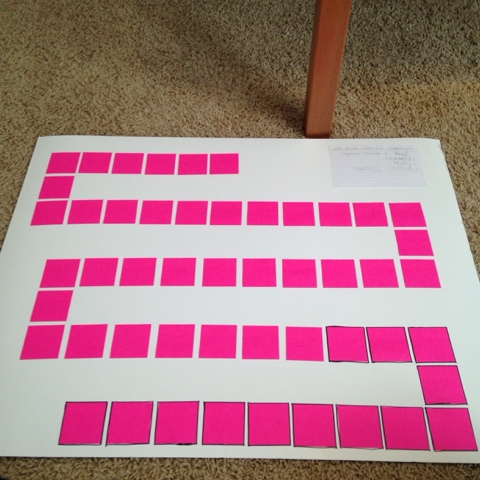So I haven't been able to write any new posts for the past few months because we've been busy moving to our new house! Exciting stuff, but it has definitely kept me busy.
One big change with the move has been that I had to leave my tutoring students. That was incredibly difficult for me, but fortunately most of them were able to find alternative arrangements. BUT, one of my students is a teen and they really could not find another Orton-Gillingham tutor in the area (trust me, I even called for them and NOBODY was accepting new clients!) So, I get to continue tutoring her.....remotely via FaceTime :)
With the new format I really needed to rethink my organization strategies and how I would structure our lessons. We would also be taking a one month break for tutoring, which definitely made me nervous because I would need to build in some review time when we started up again.
Fortunately I've been eyeing all these neat Interactive Notebooks on Pinterest and TeachersPayTeachers and realized that this was exactly the format I needed to organize our stuff and keep a record for my student to review at home. This has the added benefit of allowing her grandma, who is her primary teacher, to see exactly what we've covered and refer her to the spelling rules vs relying on her granddaughter's memory.
One of the key features of an Interactive Notebook, much like the adult-version....Bullet Journaling....is the table of contents in the front. This makes it easy to find whatever you are looking for. On the inside of the front cover I used Avery Full-Page Labels (basically huge stickers) and printed out resources on one. The top sticker lists the materials my student should have with her for each tutoring session. I have an ADHD and Dyslexic teen myself.....so I know how remembering materials can cause all sorts of problems and angst no matter how hard they try :)
Each page of the notebook is also numbered at the top. This helps with referencing the notes later and it allows me to tell her to turn to a particular page if we're reviewing a previously-learned concept.
After the Table of Contents (which spans 6 pages), the notes begin. I have roughly one page for each lesson. Some lessons include more than one separate teachings with very different rules and so I separated out those as necessary. A few lessons have the notes taking up an entire page if it's simply review, but most have a smaller box of notes that fits at the top of the page. I print each one and send them to my student to cut and paste as we learn each concept. The notes list the spelling/reading rule, a keyword picture, and a definition and examples.
Below the notes the student can write out her "Spelling on Paper" words, phrases, and sentences during the lesson. This works into the lesson really smoothly and it provides further examples later if she needs to refer to it.
I'm so enjoying this addition to our tutoring sessions that I've started implementing it with my daughter's Barton lessons too! She seems to like it so far and I like that now the onus is on her if she forgets a rule and wants to be reminded of it. I can easily refer her to the notebook where she can find the rule, see the definition and examples, and explain the rule back to me.
It's also been a sneaky way to review the concepts we covered before my student and I took a break :)

















